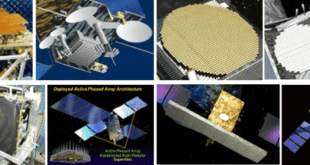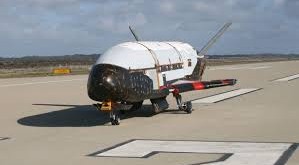Building and launching Satellites are costly business. Making a satellite can cost from $290 million upwards, while a single satellite launch can range in cost from a low of about $50 million to a high of about $400 million. Any fault could lead to making billion dollar satellite useless and has to be replaced, which is both difficult and extremely expensive. Space has also become another domain of warfare and there is threat of degradation or destruction of satellites through electronic and kinetic attacks by adversaries.
Increasing complexity and costs of satellite missions promote the idea of extending the operational lifetime or improving functionalities/ performance of a satellite in orbit instead of simply replacing it by a new one. Further, satellites in orbit can severely be affected by aging or degradation of their components and systems as well as by consumption of available resources. These problems may be solved by satellite on-orbit servicing (OOS) missions
Spacecraft servicing has long been a critical aspect of space operations, allowing satellites and other spacecraft to be repaired, upgraded, and refueled in orbit. However, traditional spacecraft servicing methods have been limited by the need for human intervention, which can be expensive, time-consuming, and risky. Fortunately, advances in autonomous docking technology are revolutionizing spacecraft servicing and enabling new opportunities for space exploration and development.
On-Orbit Servicing process
However, the process generally includes three main steps: rendezvous and capture, servicing tasks, and release.
The first step in on-orbit servicing is the rendezvous and capture of the client spacecraft by the service spacecraft. This involves using the service spacecraft’s sensors and guidance systems to approach the client spacecraft and capture it using the robotic arms. This process requires a high degree of precision and control to avoid damaging the client spacecraft or causing any collisions in orbit.
During the rendezvous stage, the approaching satellite must locate and track the target satellite, determine its relative position and velocity, and then maneuver itself into a position where it can safely dock with the target. This is typically done using a combination of sensors, such as cameras, LIDAR, and radar, as well as sophisticated algorithms that can process the sensor data and make decisions in real-time.
Once the approaching satellite has successfully completed the rendezvous stage, it must then initiate the docking sequence. This involves precisely aligning the two spacecraft and then using a docking mechanism to securely connect them together. Again, this requires advanced sensors and algorithms to ensure that the docking process is safe and successful.
Once the client spacecraft has been captured, the service spacecraft can begin performing the necessary servicing tasks using its robotic arms and toolkit. The specific tasks can vary depending on the needs of the client spacecraft, but can include anything from repairing or replacing faulty components to refueling or repositioning the spacecraft. The service spacecraft is equipped with a variety of tools and equipment that can be used to perform these tasks, including cutting tools, wrenches, and even 3D printers.
Finally, after the servicing tasks have been completed, the service spacecraft can release the client spacecraft and return to its own orbit. The client spacecraft can then resume its normal operations, now with improved functionality and extended lifespan thanks to the servicing provided by the service spacecraft.
Application of Satellite Docking
Satellite docking is a critical technology for a variety of space-related activities. One of the main applications of autonomous docking is spacecraft servicing. Autonomous docking can enable spacecraft to dock with other spacecraft or space stations for repairs, refueling, or upgrades. This can extend the life of a spacecraft and reduce the cost of launching new satellites into orbit.
Another application of satellite docking is in space exploration. Autonomous docking can enable spacecraft to rendezvous and dock with other spacecraft or landers, allowing astronauts or robots to transfer equipment and supplies between spacecraft. This can be critical for long-duration space missions, such as missions to Mars, where resupply missions may not be feasible.
Autonomous docking also has potential applications in space debris removal. Space debris, such as spent rocket stages and defunct satellites, pose a significant hazard to spacecraft in orbit. Autonomous docking can enable spacecraft to approach and capture debris, and then safely deorbit it or transfer it to a disposal orbit.
Finally, autonomous docking can enable the development of space habitats and other infrastructure in orbit. Multiple spacecraft or modules could be docked together to create a larger structure, such as a space station or a manufacturing facility. Autonomous docking can enable these structures to be assembled and maintained without human intervention, reducing the cost and risk of space operations.
Overall, the development of autonomous satellite docking technologies has the potential to revolutionize space operations and enable new applications that were previously not feasible. As space activities continue to expand and evolve, the importance of satellite docking technology will only continue to grow.
Autonomous docking technologies
Autonomous docking is the process by which spacecraft can rendezvous and dock with other spacecraft or space stations without the need for human intervention. Autonomous docking relies on a combination of sensors, algorithms, and advanced guidance, navigation, and control (GNC) systems to enable spacecraft to precisely maneuver and dock with their targets.
Some of the key technologies involved in autonomous satellite docking include:
- Guidance, Navigation, and Control (GNC) systems: These systems use sensors such as cameras, LIDAR, and radar to determine the relative position and velocity of the spacecraft and to guide its movements during the docking process.
- Machine Learning (ML) and Artificial Intelligence (AI) algorithms: These algorithms use data from sensors to identify patterns and make decisions in real-time. ML and AI can help spacecraft adapt to changing conditions during the docking process, such as unexpected movements or changes in lighting conditions.
- Autonomous rendezvous and docking (AR&D) systems: These systems combine GNC and ML/AI algorithms to enable spacecraft to autonomously rendezvous and dock with other spacecraft. AR&D systems are typically used in conjunction with docking mechanisms such as the International Docking System Standard (IDSS) or the Androgynous Peripheral Attach System (APAS).
- Vision-based navigation systems: These systems use cameras and computer vision algorithms to provide high-precision position and attitude estimates of the spacecraft during the docking process. Vision-based navigation can be used in conjunction with other sensors to improve accuracy and reliability.
- Proximity operations tools: These tools provide real-time visualization and analysis of the spacecraft’s position and attitude during the docking process. Proximity operations tools can help spacecraft operators identify potential issues and take corrective action before problems arise.
This technology has been developed and tested by organizations such as NASA, SpaceX, and others, and has already been used successfully in several space missions.
One of the key advantages of autonomous docking is its potential to significantly reduce the cost and complexity of spacecraft servicing. Traditional servicing methods, such as manned spaceflights or robotic missions, can be expensive and time-consuming, requiring significant resources and infrastructure. Autonomous docking, on the other hand, can enable spacecraft to dock with other spacecraft or space stations for repairs, refueling, or upgrades, without the need for a dedicated servicing mission. This can save time and money, as well as reduce the risk to human operators.
For a detailed understanding on In orbit assembly repair technology and applications please visit: Manufacturing in Space: How In-Orbit Repair and Assembly is Revolutionizing Space Exploration
Another advantage of autonomous docking is its potential to enable new opportunities for space exploration and development. Autonomous docking can enable spacecraft to rendezvous and dock with other spacecraft or landers, allowing astronauts or robots to transfer equipment and supplies between spacecraft. This can be critical for long-duration space missions, such as missions to Mars, where resupply missions may not be feasible. Autonomous docking can also enable the development of space habitats and other infrastructure in orbit, by allowing multiple spacecraft or modules to be docked together to create a larger structure, such as a space station or a manufacturing facility.
Of course, like any new technology, there are challenges and risks associated with autonomous docking. One of the main challenges is ensuring the reliability and safety of the technology, especially as it is deployed in increasingly complex and challenging space environments. There is also a need to develop standardized docking interfaces and protocols to ensure interoperability between different spacecraft and space stations. Finally, there is the need to develop and test autonomous docking technologies in a variety of space environments and scenarios, to ensure that the technology is robust and effective under different conditions.
Despite these challenges, the future of spacecraft servicing looks bright, thanks to the advances in autonomous docking technology. Autonomous docking has the potential to significantly reduce the cost and complexity of space operations, as well as enable new opportunities for space exploration and development.
While the process of on-orbit servicing with a service spacecraft is still relatively new, it has already been successfully used in several missions, including the recent MEV-1 and MEV-2 missions by Northrop Grumman.
Starfish Space to perform LEO satellite docking using electric propulsion
Starfish Space, a Canadian space start-up founded in 2019, has announced that it will perform a Low Earth Orbit (LEO) satellite docking demonstration using electric propulsion in 2024. The mission, called “The Ocean”, is part of Starfish Space’s long-term plan to revolutionize on-orbit satellite servicing using advanced robotics and electric propulsion technology.
The mission will use Starfish Space’s advanced robotic spacecraft to rendezvous and dock with a target satellite in LEO using electric propulsion technology. The spacecraft will use its onboard sensors and guidance systems to autonomously approach the target satellite and dock with it using its robotic arm. The mission aims to demonstrate the feasibility of autonomous satellite servicing and the use of electric propulsion for satellite maneuvering and docking.
Electric propulsion technology is seen as a promising alternative to traditional chemical propulsion systems for satellite maneuvering and docking, as it is more efficient and has a lower impact on the environment. By using electric propulsion, Starfish Space hopes to reduce the cost and complexity of on-orbit satellite servicing and help extend the lifespan of existing satellites.
The success of the mission could have significant implications for the future of on-orbit satellite servicing and the development of space infrastructure. As the number of satellites in orbit continues to grow, the need for on-orbit servicing and maintenance is becoming increasingly important. By developing advanced robotic spacecraft and electric propulsion technology, Starfish Space is positioning itself at the forefront of this emerging field and helping to drive innovation in space operations.
Conclusion
As more and more satellites are launched into orbit and the need for servicing increases, it is likely that on-orbit servicing with service spacecraft will become an increasingly important aspect of space operations. With the advanced robotics and sensing technology available today, the future looks bright for on-orbit servicing and the continued development of space exploration and development.
As we continue to develop and refine this technology, we can look forward to a new era of space operations, where spacecraft can dock and work together autonomously, unlocking new possibilities for humanity’s exploration of the final frontier.
 International Defense Security & Technology Your trusted Source for News, Research and Analysis
International Defense Security & Technology Your trusted Source for News, Research and Analysis

